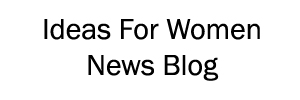|
|
Pregnancy and child birth (Part 2)
|
Yesterday I ran out of time to write about research topics about pregnancy and childbirth – so here is part 2:
Archives of Pediatrics and Adolescent Medicine reports that when pregnant women get a flu shot and then give birth during the flu season the babies do not seem to be protected from respiratory disease as newborns. The research studied 3160 babies from mothers who were vaccinated and 37,969 who weren’t.
New data from the Centers for Disease Control and the National Center for Health Statistics show that around 30% of babies born in the US are through a C-section. This is a record high (in 2005), while the number of teenagers giving birth has gone down dramatically. The 2005 rate of teen (15-19) births was 40.4 out of 1000. In 1991 it was 61.8 in 1000 births.
A study in Obstetrics & Gynecology prevents evidence that amniocentesis during the 4-6th months ”midtrimester” of pregnancy does not raise the rate of a miscarriage. Amniocentesis is of course the procedure in which a needle is inserted through the abdomen to the uterus to get a sample of amniotic fluid for purposes of diagnosing genetic diseases, gender, etc. This study by Dr. Keith A. Eddleman from Mount Sinai School of Medicine, New York examined a large amount of data – from around 3000 women who had amniocentesis and 31,000 who didn’t. One of the interesting things they noticed was that in women over 35 the rate of miscarriage after amniocentesis was 1.06% and for women of that age range who didn’t have it was higher – 1.92%.
A few other odd and ends related to pregnancy and childbirth – metformin – given to women for polycystic ovary syndrome and type 2 diabetes does not seem to increase the risk of birth defect when given during the first trimester (Fertility and Sterility). Women who are given drugs to induce labor have nearly double the chance of an amniotic fluid embolism (Lancet). New guidelines suggest reducing the number of embryos implanted for in-vitro fertilization to 2 or less for women under age 35, 2 or 3 from 35 to 37, 4 for 38 to 40 and 5 for women over the age of 40. Research in the The Cochrane Library suggests that hypnosis, acupuncture, massage, relaxation, aromatherapy and acupressure may help to reduce labor pain.
And finally, a report from a Czech journal, Naturwissenschaften, suggests that women who are infected with the parasite that causes toxoplasmosis are more likely to have boys. Usually 51% of babies are boys, but in women with this parasite it was found that 61 percent of babies were boys. People can become infected with it from eating undercooked meat or exposure to the feces of cats. Pregnant women exposed to the parasite have a greater chance of having a baby with birth defects which is the reason pregnant women are recommended to have someone else clean their cat’s litterbox. The data also showed that the more antibodies the woman had to the parasite the more likely she was to have a boy – with the women who had the highest amount having a 72% chance of having a boy.
(Technorati Tags: amniocentesis, pregnancy, miscarriage, toxoplasmosis, childbirth)
________________________________________
If you like this post please share or vote for it below:
Stumble:  Kirtsy:
Kirtsy: ![]() delicious:
delicious:  reddit:
reddit:  Digg:
Digg: 
________________________________________
If you like my blog please subscribe to read updates in a
feed reader (what does this mean?)
or by email!
Thanks! I really appreciate all your support!
________________________________________
Related Posts:
- Pregnancy – diet, weight gain and diabetes
- Pregnancy and newborn health
- Smoking Part 1: Pregnancy and young children
One Response to 'Pregnancy and child birth (Part 2)'
Subscribe to comments with RSS or TrackBack to 'Pregnancy and child birth (Part 2)'.
Leave a Reply
Comments protected by Lucia's Linky Love.




on July 4th, 2008 at 4:38 pm
I agree with the comment about inducing labor–it should be avoided if at all possible. Natural methods such as acupressure are much safer and easier on the mom and baby.